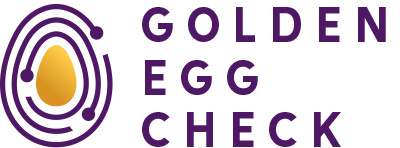Why following up after your investor pitch matters
Your follow-up communication demonstrates professionalism and commitment to building lasting relationships within the investment community. Many investors evaluate numerous pitches regularly, and thoughtful follow-up helps you stand out from entrepreneurs who disappear after their presentation.
Post-pitch communication serves multiple purposes beyond immediate funding goals. It shows you can manage stakeholder relationships effectively, a skill investors value highly. When you follow up appropriately, you demonstrate the same attention to detail and relationship management that successful startup funding requires.
Remember that investor relationships often span years before resulting in funding. Companies can receive investment from investors who initially declined but stayed engaged through consistent, valuable communication. Your follow-up strategy sets the foundation for these long-term relationships.
When should you follow up after pitching an investor?
Send your initial follow-up within 24-48 hours of your pitch meeting. This timeframe shows enthusiasm whilst respecting the investor’s schedule and allowing them time to process your presentation.
The timing of subsequent follow-ups depends on the investor’s response and your fundraising timeline. If they’ve expressed interest and requested specific information, respond within one week. For general updates during active fundraising, maintain contact every 4-6 weeks.
Consider external factors that might influence timing. Avoid following up during holiday periods, major industry events, or when you know the investor is travelling. If you’ve received feedback suggesting they want to see more traction, wait until you have meaningful progress to report rather than sending empty updates.
What should you include in your follow-up message?
Start with a genuine thank you for their time and any insights they shared during the meeting. Reference specific points from your conversation to show you were actively listening and value their input.
Include any information or documents they specifically requested. This might be detailed financial projections, technical specifications, customer references, or team member CVs. Ensure all attachments are clearly labelled and professionally formatted.
Share relevant progress updates that demonstrate momentum since your meeting. This could include new customer acquisitions, product developments, team additions, or partnership announcements. Keep updates concise and focus on metrics that matter to investors in your sector.
| Follow-up Element | Purpose | Example |
|---|---|---|
| Personal thank you | Shows professionalism | “Thank you for the insights about European expansion” |
| Requested materials | Demonstrates reliability | Updated financial model with scenario analysis |
| Progress updates | Shows momentum | “Signed new enterprise clients this month” |
| Clear next steps | Maintains momentum | “Available for follow-up call next week” |
How do you handle different types of investor responses?
When investors express positive interest, respond promptly with requested information and suggest concrete next steps. Propose specific meeting times for due diligence discussions and be prepared to move quickly whilst maintaining thoroughness.
For requests for additional information, treat these as opportunities to demonstrate your expertise and preparation. Provide comprehensive responses that anticipate follow-up questions. If you don’t have the requested information immediately available, acknowledge the request and provide a realistic timeline for delivery.
Handle concerns or objections by addressing them directly and honestly. If an investor raises valid points about market size or competitive positioning, show how you’re addressing these challenges rather than dismissing their concerns. This approach often impresses investors more than having perfect answers to everything.
When faced with silence, send one polite follow-up after two weeks, then respect their decision to not respond. Maintain them in your update list for future rounds, as circumstances and timing often change.
What mistakes should you avoid when following up?
Avoid being overly persistent or aggressive in your follow-up approach. Sending daily emails or making repeated phone calls creates a negative impression and suggests poor judgement in stakeholder management.
Don’t send generic, mass-produced updates that could apply to any startup. Investors can immediately tell when you’ve sent the same message to multiple recipients. Personalise your communications based on their specific interests and previous conversations.
Resist the urge to follow up when you have nothing meaningful to share. Sending updates just to stay visible can backfire if your progress appears stagnant. Wait until you have genuine developments worth communicating.
Never misrepresent your situation or progress to create false urgency. Claiming you have term sheets when you don’t, or exaggerating customer traction, will damage your credibility permanently once discovered.
How often should you update investors during the fundraising process?
Maintain regular communication with interested investors every 4-6 weeks during active fundraising. This frequency keeps you visible without overwhelming their inbox with excessive updates.
Focus on sharing progress that demonstrates growth and momentum. Meaningful updates include revenue milestones, new customer acquisitions, product launches, key team additions, or strategic partnerships. Avoid sharing minor operational details that don’t impact your investment case.
Adjust your update frequency based on the investor’s engagement level. Highly interested investors who are conducting due diligence may want weekly updates, whilst others prefer monthly summaries. Pay attention to their response patterns and adjust accordingly.
Continue updating investors even after they decline to invest in your current round. Startups can receive funding from investors who passed on earlier rounds but stayed engaged through consistent communication.
Building lasting investor relationships beyond the initial pitch
Effective follow-up communication creates the foundation for long-term relationships that extend far beyond individual funding rounds. Investors can become valuable advisors, connectors, and advocates even when they don’t invest immediately.
Focus on providing value in your communications rather than just asking for money. Share industry insights, introduce investors to other interesting companies, or invite them to relevant events. This approach transforms you from a funding seeker into a valuable network contact.
Remember that investor relationships often span multiple companies and career stages. The investor who passes on your current startup might fund your next venture, or recommend you to other investors when timing and fit improve.
Following up after an investor pitch requires a strategic approach that balances persistence with professionalism. Send your initial follow-up within 24-48 hours, expressing gratitude and providing any requested information. Maintain regular updates every 4-6 weeks during active fundraising, sharing meaningful progress milestones. Focus on building relationships rather than just securing immediate funding, as today’s “no” could become tomorrow’s “yes” when your startup reaches the right stage.




